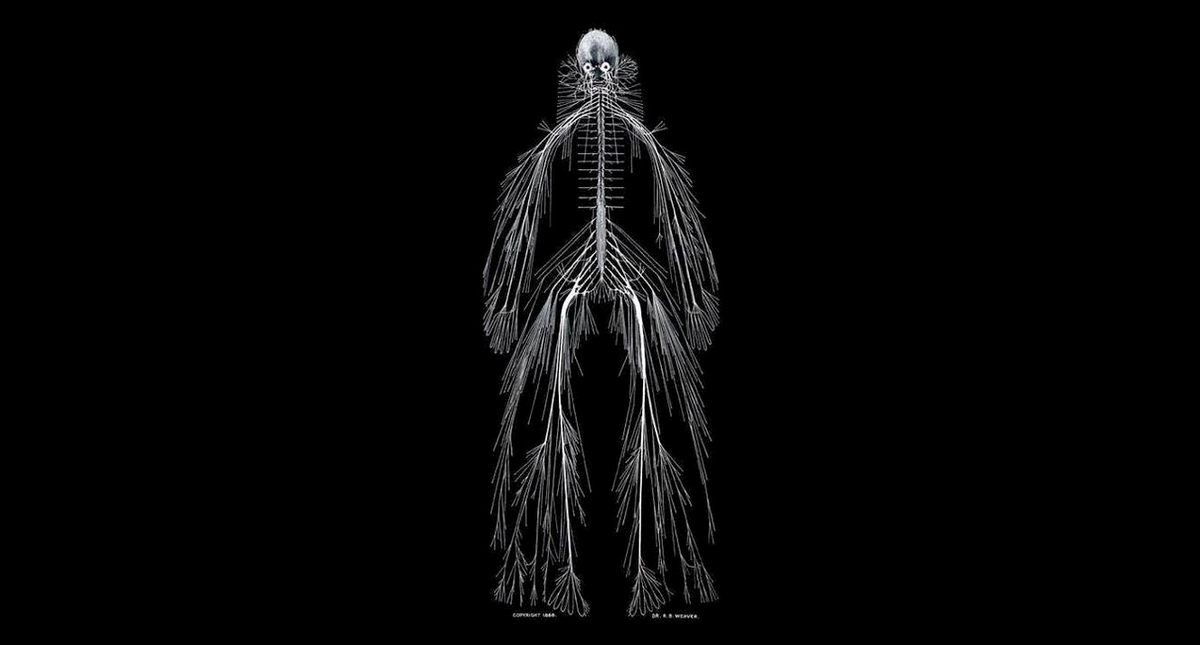A popular image shared by science-focused social media accounts is that of an image labeled as some variation on "the complete human nervous system dissection" or "a fully dissected nervous system."
This is an accurate description of a photograph that shows the first complete human nervous system dissection — a feat that was accomplished by Philadelphia anatomist Rufus B. Weaver in 1888. The specimen is part of the Drexel University archives. As described on that university's archives and special collections website, the specimen was medically and scientifically groundbreaking but a long-told story about the woman who supposedly donated her body for the display is dubious:
The complete dissection of the human cerebrospinal nervous system known as "Harriet" was created by anatomist Dr. Rufus B. Weaver in 1888. At the time, this specimen was recognized as an important teaching tool in the field of neurology. The story of the specimen has been told with varying degrees of accuracy and at times without respect for informed consent or bodily autonomy.
The commonly told story behind the specimen was that it came from a Black woman named Harriet Cole who worked "as a maid or scrubwoman in a university laboratory at Hahnemann Medical College" — an institution that is now part of Drexel University. This story was promoted in a Drexel University news release as recently as 2012:
Harriet Cole was a maid employed at what is known today as Drexel's College of Medicine. Then, back in the late 19th century, it was called Hahnemann Medical College, and it was the place of employment of a Dr. Rufus B. Weaver, professor of anatomy. Among Harriet's duties was cleaning up the room where Weaver dissected cadavers with his medical students.
According to Joanne Murray, historian and director of the College of Medicine's Legacy Center, the story goes that Harriet suffered from tuberculosis and, just before she died at age 35, she willed her body to Dr. Weaver and requested it be used to benefit science.
"We presume that she saw and knew the kind of work he was doing and maybe they had conversations," Murray says. "So, she decided to leave her body to him. I don't know that she had any idea how he would use it."
Efforts to substantiate these details have thus far been inconclusive, but historians say that it is unlikely a Black woman of her alleged status in the 1880s would have knowingly donated her body to science. That news release, titled "Drexel's Longest-Serving Employee," now has an editor's note: "Some of the information in this 2012 post is incorrect and does not reflect our current understanding and the documentation available."
As explained on Drexel's archives and special collections website, documentation supports the existence of someone named Harriet Cole who died in 1888, but the story could be a fairy tale employed to cover up a darker truth:
At the time of Harriet Cole's death in 1888, laws set forth by the Pennsylvania State Anatomical Board and the Anatomy Act of 1883 governed unclaimed human remains. In accordance with these laws, unclaimed persons at [Pennsylvania General Hospital] were transferred to area schools for "the advancement of medical science."
Because, however, the image is that of a genuine and complete human nervous system derived from dissection, we rate the claim as "True."


